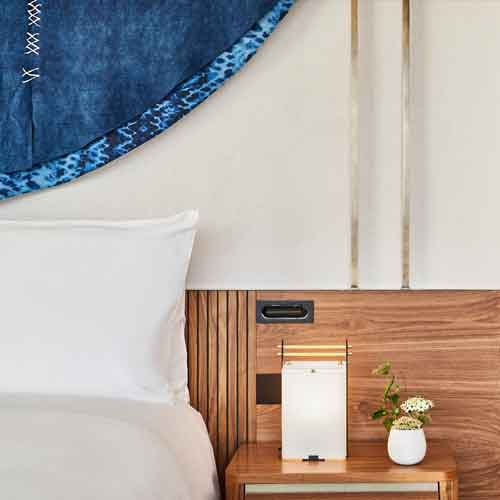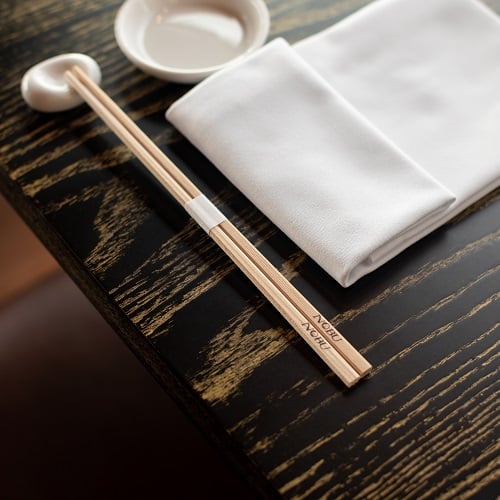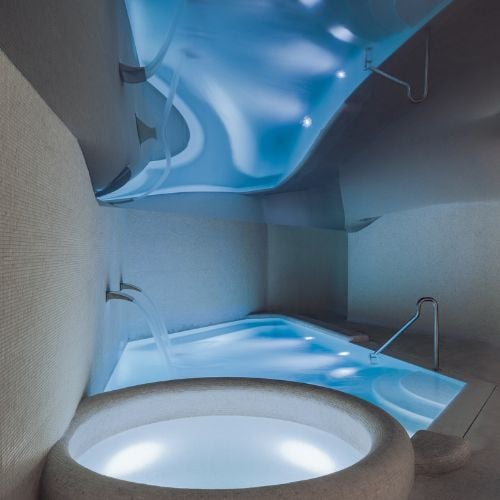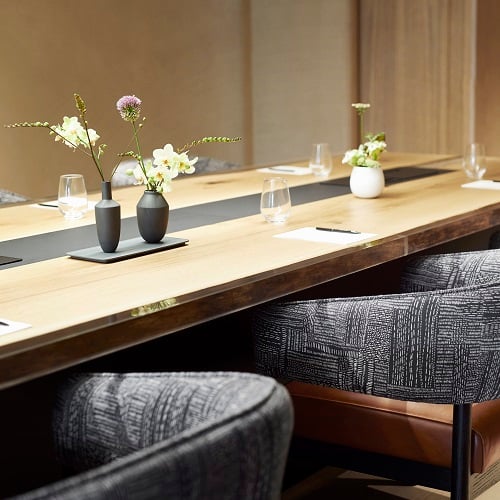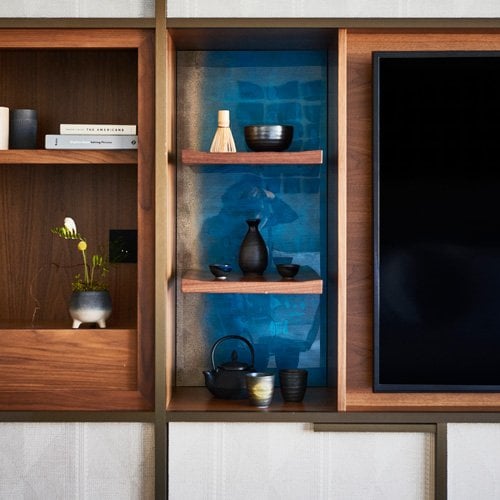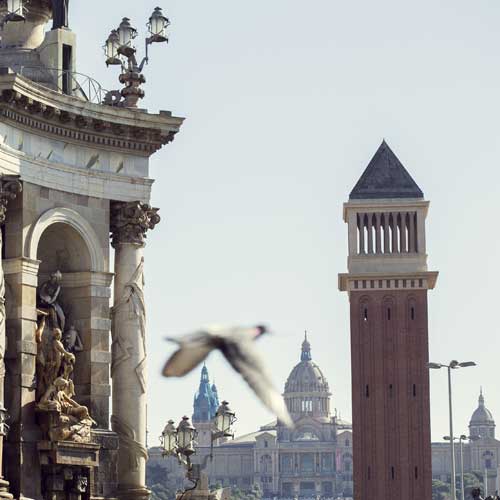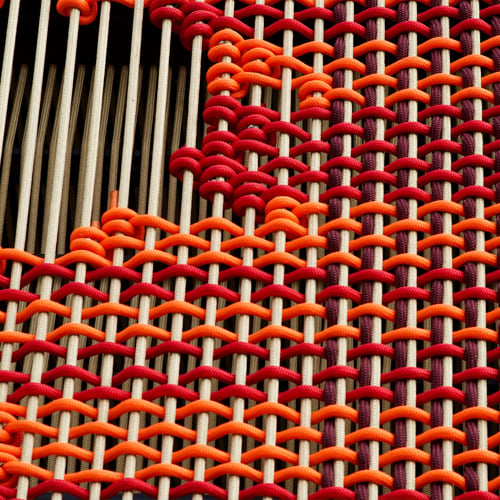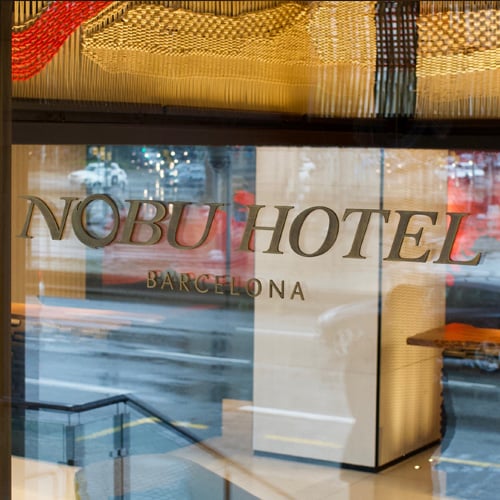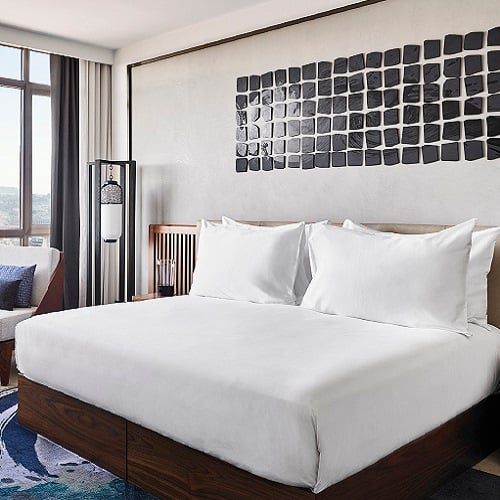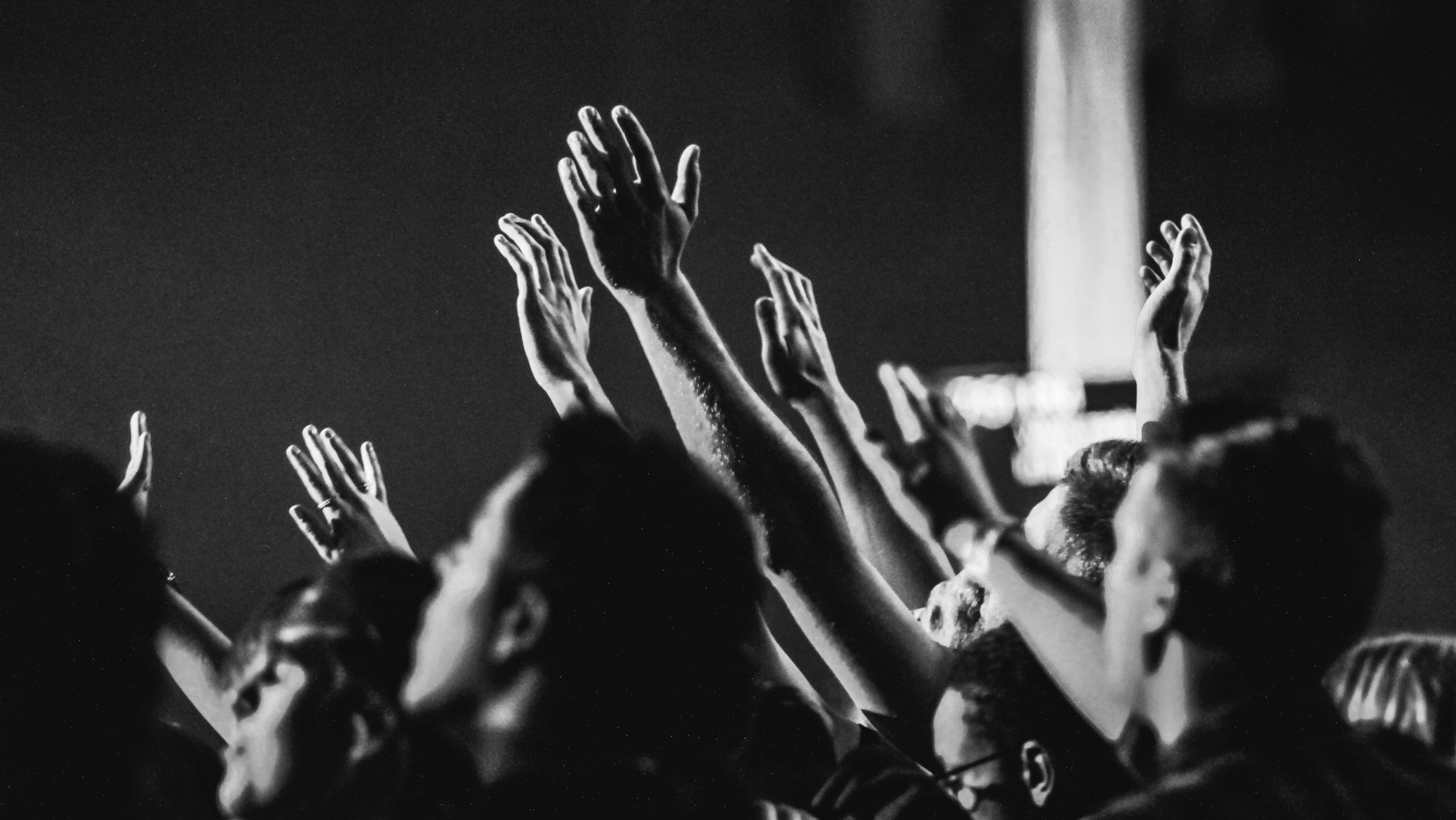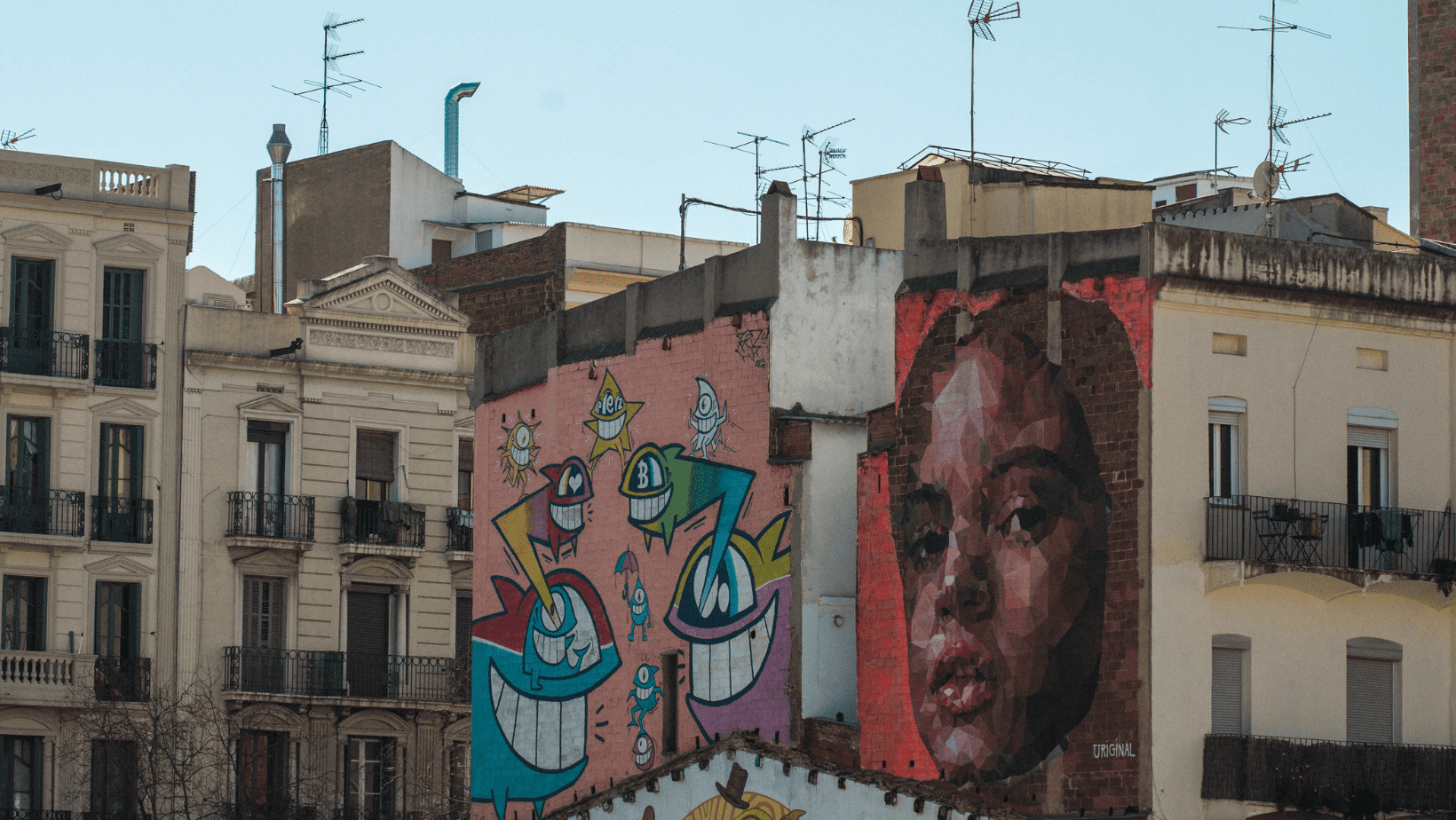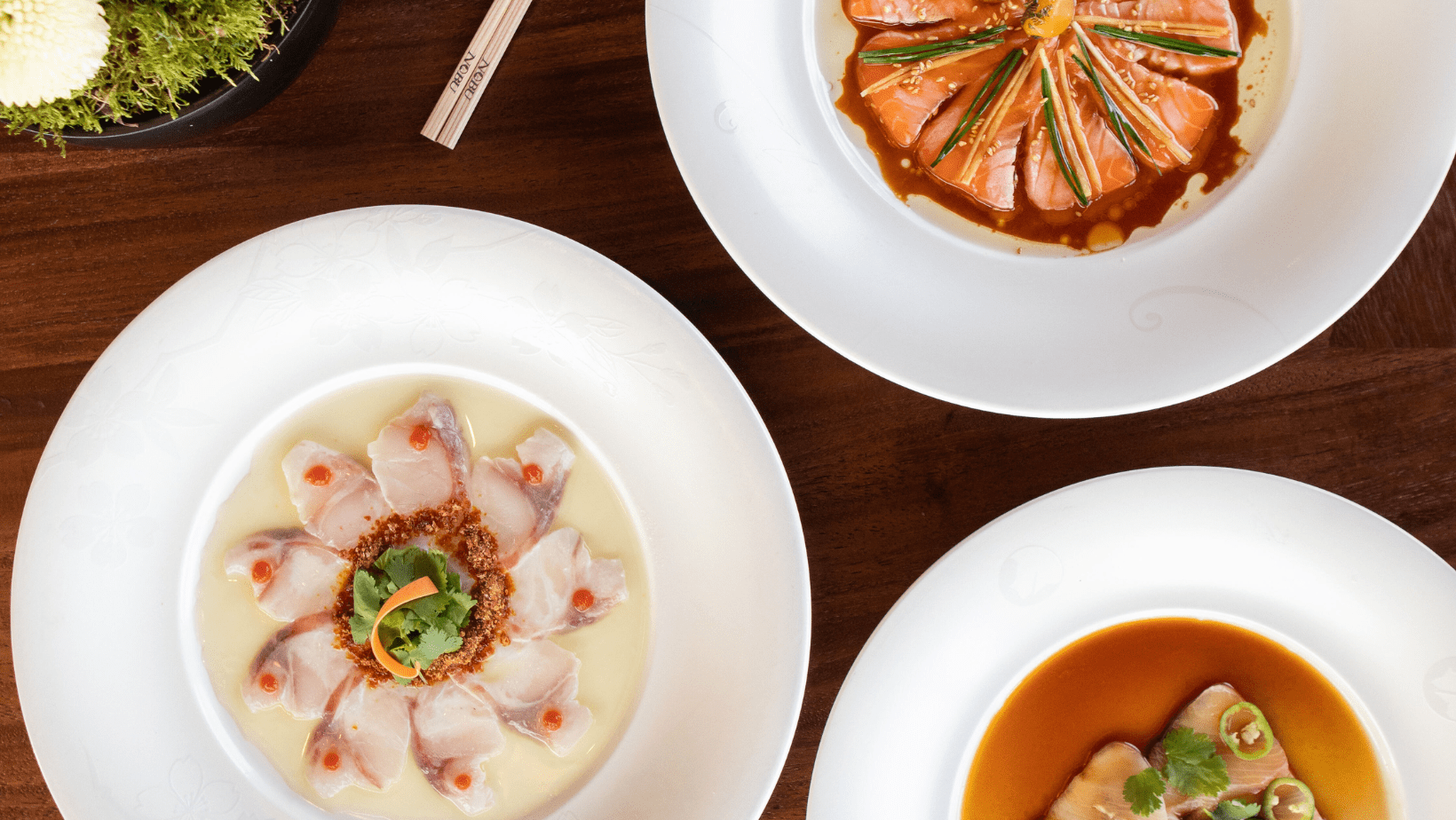14 things to see in Sants Neighbourdhood
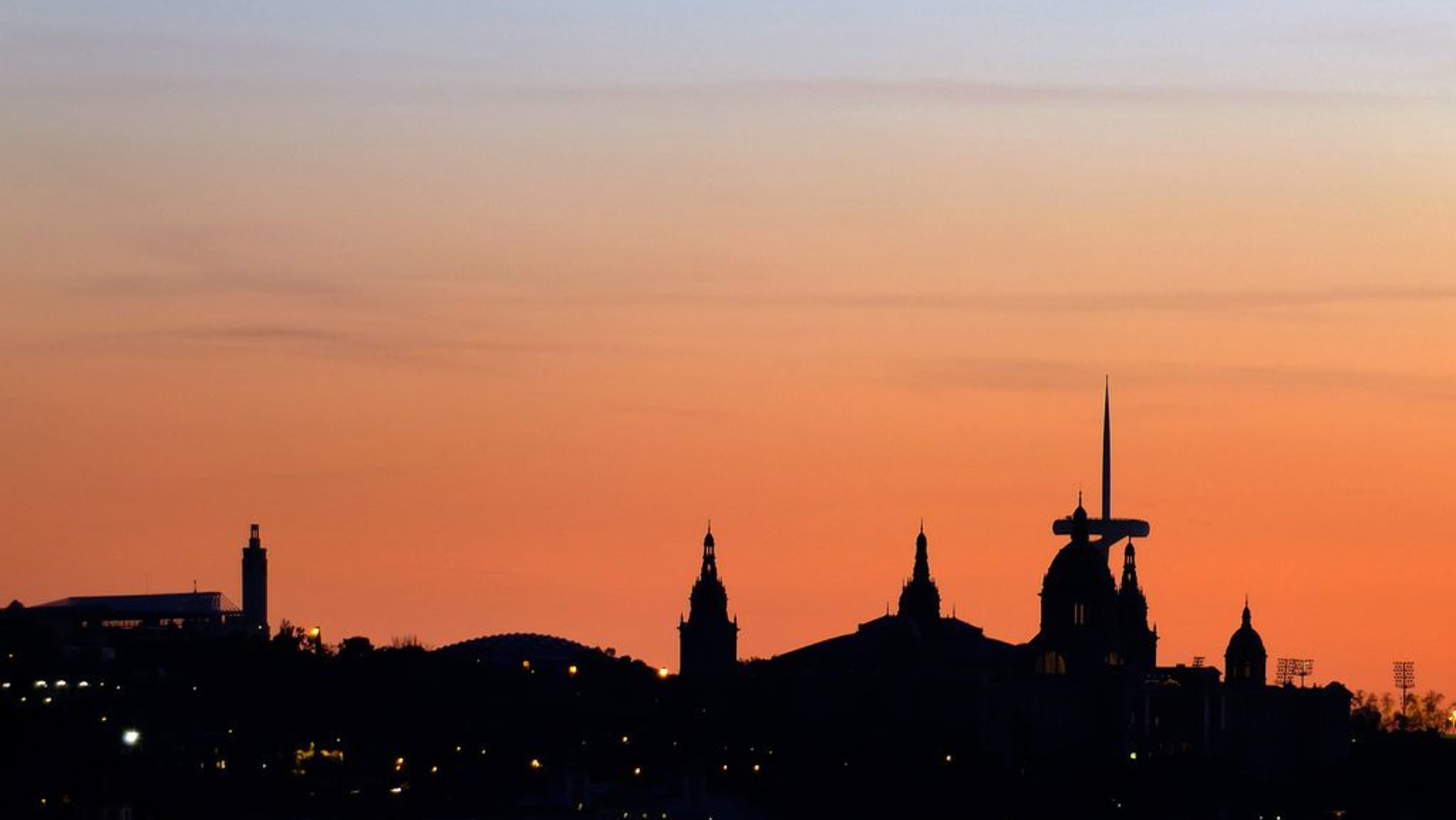
WHAT TO SEE IN SANTS NEIGHBOURHOOD
Here at Nobu Barcelona we love the imaginative work of Gaudí and the medieval splendor of the Gothic Quarter, but we think our neighbourhood is pretty great too. Dive into our map to discover the hidden spots of Sants-Montjuïc for some Barcelona exploring with a difference.
La Model
A former prison opened in 1904 and based on Jeremy Bentham’s thesis on the panopticon, this uniquely designed building is now runs guided tours where you can uncover the Barcelona of the early 20th century and the stories of famous inmates. La Model’s external walls are also worth a visit in themselves featuring murals by BYG, Emily Eldridge and Paula Bonet.
Parc Joan Miró
This small, unassuming park behind the Las Areas bullring is home to one of Joan Miro’s last completed works. The statue of Dona I Ocell (Woman and bird) is one of a trio of Miro works designed to welcome visitors to Barcelona. The other two can be found at Barcelona Airport Terminal Two and on Las Ramblas.
Plaça Espanya
Built for the 1929 World Exhibition, Plaça Espanya intersects the well-to-do Eixample neighbourhood and authentic Sants and is the gateway to Montjuïc – the city’s green lung and museums quarter and once home to the Olympic Games. Head up to the top floor of former bullring turned shopping centre Las Arenas for a fantastic view of the square and Montjuïc beyond.
Museu Nacional d’Art de Catalunya
At the end of Avinguda de la Reina Maria Cristina stands the impressive Museu Nacional d’Art de Catalunya, home to over 5000 Catalan, Spanish and European works of art. The MNAC takes visitors on a journey through the ages from Romanesque frescos from churches in the Pyrenees via works by El Greco and Velázquez to the modernism and neo realism of Santiago Rusiñol, Pablo Picasso and Xavier Miserachs.
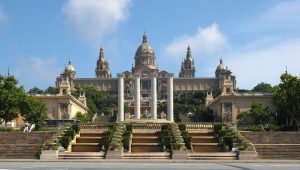
Autor: Vicente Zambrano González
Caixa Forum
Housed in a former textile factory designed in the Modernist style by a contemporary of Gaudí, Josep Puig I Cadafalch, Caixa Forum is an art gallery focused on modern and contemporary art and the intersection of art and technology.
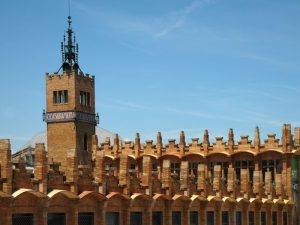
Autor: Vicente Zambrano González
Barcelona Pavilion
A reference of twentieth century architecture, the pavilion designed by Ludwig Mies van der Rohe and Lilly Reich is an emblematic work of the Modern Movement. Originally constructed as the German Pavilion for the 1929 Barcelona International Exhibition, it was rebuilt in the early 1980’s and remains a mecca for design lovers who can also catch a glimpse of the original Barcelona Chair.
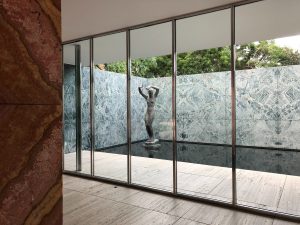
Castell de Montjuïc
Montjuïc Castle has a somewhat chequered past; from a simple medieval watchtower it was transformed into a castle fortress, strategically placed to keep watch over the city and port. Used as a military prison after the Civil War, the castle had a notorious reputation in the minds of Barcelona citizens until 2007 when the castle was handed back to the city and transformed into a hub for cultural events such as concerts, outdoor cinema screenings and exhibitions.
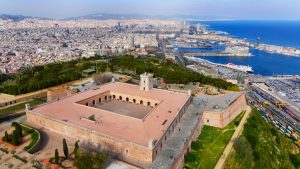
Autor: HEMAV
Fundació Joan Miró
Unusually for musuems celebrating the work of an artist, the Foundation was created by Miró himself originally with works from his own private collection. Now Miró’s work co-exists with cutting edge contemporary art, all housed in a unique building designed by prominent Catalan architect Josep Lluís Sert.
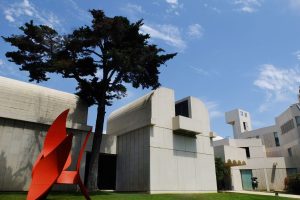
Autor: Vicente Zambrano González
Olympic Stadium
Originally built for the 1929 International Exhibition, the Olympic Stadium was part of an unsuccessful bid for the 1936 Olympics before finally getting its moment in the spotlight as the main stadium of the 1992 games which transformed the city. Former home to Barcelona football team RCD Espanyol, the stadium now hosts athletic championships and local football teams.
Parque de la España Industrial
Designed by the architects Luis Peña Ganchegui, Antón Pagola and Montserrat Ruiz in 1985, the Espanya Industrial park extends over the land formerly occupied by a textile factory and is an example of how, from the 1980s onwards, the city’s spaces were used to create quality public facilities.
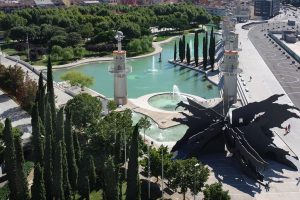
Autor: Vicente Zambrano González
Plaça d’Osca
Once the site of Sants’ market, this leafy square has kept that lively, bustling spirit but these days its more about eating/sampling food than selling it. Head to Homo Sibaris for local craft beer or grab a table on the terrace of Vermut i a la Gàbia for Catalan wine, vermouth and tapas.
Mercat de Sants
Designed by Modernist architect Pere Falqués, who also designed the lampposts on Passeig de Gràcia, this impressive brick building was built in 1913 and underwent extensive renovation in 2014. Step inside for a wander around the stalls and pick up a snack on your way.
Sants ‘Highline’
Move over New York, Sants has its very own highlight to stroll along. Built to cover railway tracks and providing an agreeable outdoor space to walk, bike or skate the Sants Highline has also served another purpose; uniting a neighbourhood divided by the train tracks.
Flowers by Bornay
Described as being to floral art what Ferran Adrià to Gastronomy, Flowers by Bornay is an avant-garde floral atelier daring to break the mould of the profession, finding inspiration in cinema culture, science fiction, pop culture, art and dance, using unconventional materials. Their studio is worth a visit in itself, housed in a 19th Century industrial building in the heart of the neighbourhood.

Autor: Fabrizio Coloque
Teatre Grec
This outdoor theater, designed by architects Ramon Reventós and Nicolau Maria Rubió i Tudurí in a former quarry, serves as the main venue for the Grec Festival held every summer, featuring theater, dance, music, and circus performances in the city every July.
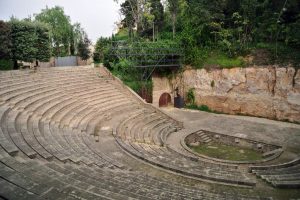
Autor: Vicente Zambrano González





